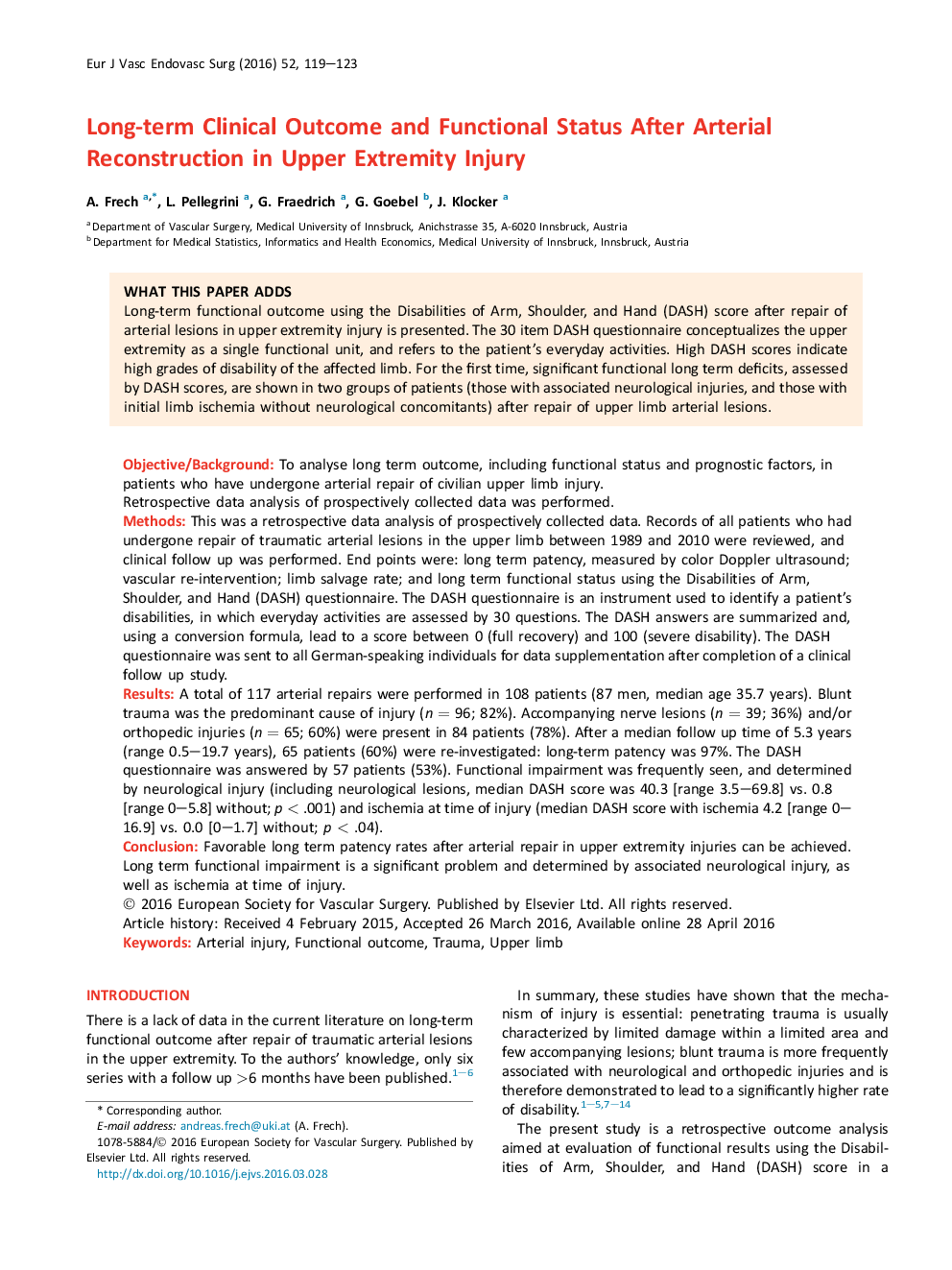| کد مقاله | کد نشریه | سال انتشار | مقاله انگلیسی | نسخه تمام متن |
|---|---|---|---|---|
| 2911654 | 1575428 | 2016 | 5 صفحه PDF | دانلود رایگان |
Objective/BackgroundTo analyse long term outcome, including functional status and prognostic factors, in patients who have undergone arterial repair of civilian upper limb injury.Retrospective data analysis of prospectively collected data was performed.MethodsThis was a retrospective data analysis of prospectively collected data. Records of all patients who had undergone repair of traumatic arterial lesions in the upper limb between 1989 and 2010 were reviewed, and clinical follow up was performed. End points were: long term patency, measured by color Doppler ultrasound; vascular re-intervention; limb salvage rate; and long term functional status using the Disabilities of Arm, Shoulder, and Hand (DASH) questionnaire. The DASH questionnaire is an instrument used to identify a patient's disabilities, in which everyday activities are assessed by 30 questions. The DASH answers are summarized and, using a conversion formula, lead to a score between 0 (full recovery) and 100 (severe disability). The DASH questionnaire was sent to all German-speaking individuals for data supplementation after completion of a clinical follow up study.ResultsA total of 117 arterial repairs were performed in 108 patients (87 men, median age 35.7 years). Blunt trauma was the predominant cause of injury (n = 96; 82%). Accompanying nerve lesions (n = 39; 36%) and/or orthopedic injuries (n = 65; 60%) were present in 84 patients (78%). After a median follow up time of 5.3 years (range 0.5–19.7 years), 65 patients (60%) were re-investigated: long-term patency was 97%. The DASH questionnaire was answered by 57 patients (53%). Functional impairment was frequently seen, and determined by neurological injury (including neurological lesions, median DASH score was 40.3 [range 3.5–69.8] vs. 0.8 [range 0–5.8] without; p < .001) and ischemia at time of injury (median DASH score with ischemia 4.2 [range 0–16.9] vs. 0.0 [0–1.7] without; p < .04).ConclusionFavorable long term patency rates after arterial repair in upper extremity injuries can be achieved. Long term functional impairment is a significant problem and determined by associated neurological injury, as well as ischemia at time of injury.
Journal: European Journal of Vascular and Endovascular Surgery - Volume 52, Issue 1, July 2016, Pages 119–123
